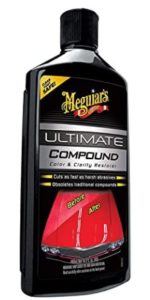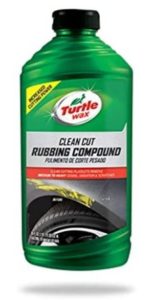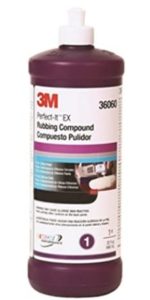A vehicle’s clear coat is responsible for providing some protection to the colored paint from dust, corrosion, environmental factors, and minor scratches to improve the longevity of the color and enhance shine. However, like any other type of finishing, the clear coat experiences scratches, weakens from exposure to the elements, and becomes dull or starts to wear out.
So to maintain the clear coat’s integrity, you will have to remove it and replace it. Removing a car’s clear coat without damaging the inner paint is a delicate job to ensure you also do not incur extra costs to fix the colored paint. We have given you a detailed guide on everything you need to know how correctly remove the clear coat without affecting the colored paint.
How to remove a car’s clear coat without damaging the paint
This procedure requires a lot of time; therefore, you need to set ample time to do it in no hurry. It is important to note that you should not be too heavy-handed, especially during the sanding stage.
Things you need
- Safety gear (goggles, mask, gloves, and overalls)
- Multiple grit sandpaper (400, 800, 1,000, and 1,200 grit sandpaper)
- Electric polisher or wool pad
- Buffing pads
- Washing hose
- Water
- Spray detailer
- Clean cotton rags
- Finishing polish
Instructions
1. Prepping
Wear your safety gear to protect your eyes, nose, mouth, and skin. Inhaling the sanded dust can be harmful to your respiratory system and can also irritate your eyes. Next, soak some sandpaper sheets in clean water to strengthen enough to remove the clear coat.
2. Wash the vehicle
Wash your car thoroughly to remove dirt, grime, oil, and grease from the vehicle’s surface. First, start by soaking the whole car with soapy water to loosen the dirt. This step reduces the risk of creating new scratches while scrubbing. Then clean off the dirt using a pressure washer or by hand and then wipe the surface dry. Having a clean surface to work on also allows you to see the extent of the damage.
3. Wet-sand the clear coat
Take out the 400-grit sandpaper and wet sand the surface to remove the peeling clear coat on your car. Gently move the sandpaper back and forth. Wet-sanding intends to weaken the clear coat. After sanding the whole car using the 400-grit sandpaper, you can advance to the finer grit sandpaper. Slowly introduce the 800-grit, 1000-grit, and then the 1200-grit sandpapers.
Take your time during this step and check the process frequently and make adjustments if necessary. Make sure the sanding is equal all over the vehicle. You should be able to see a crosshatch appearance with a smooth feel to the touch, which indicates the clear coat is coming off well.
4. Tape the delicate car parts
After you’re satisfied with the wet-sanding, cover the delicate parts of your car with tape and polythene paper to protect them from damage during the proceeding steps. These delicate parts include windows, tail lights, rims, screen wipes, mirrors, headlights.
5. Dry-sand the vehicle
Use either the 600-grit or 800-grit sandpaper to dry-sand the vehicle’s surface at a 45° angle. Also, pay extra attention to the pattern in which you are sanding. For normal scratches, you need to go with the natural grain for an even tone. It is best to be delicate during dry sanding because the clear coat at this point is relatively thin. The objective of this step is to get an extra smooth and even finish for your vehicle.
6. Wash the sanded car
Rinse the vehicle with water to remove the clear coat dust. You should stop sanding when the water turns milky as most if not all of the clear coat is gone. Next, dry the car surface with a clean, dry cloth.
7. Buff the sanded surface
Polish the sanded areas on your car either using an electric polisher or the wool pad. Using an automatic polisher is faster and will also save you time. Set the electric polisher at the lower rotation speed of about 1200-1400 revolutions every minute and apply an even coat of polish using a cyclic motion on all the sanded surfaces. This cyclic motion allows for some overlap to ensure the surface is well-impacted.
Alternatively, you can also manually polish the sanded surface using a wool pad. Wear protective gloves and apply the polish sparingly and evenly to prevent burns that may compromise the quality of the outcome.
After polishing, the scratches on the surfaces will have disappeared. But some circular swirls will remain, which you have to clear. Apply a finishing polish and a polishing pad to remove the swirls. If you’re using an electric polisher, run it at a higher speed to generate stronger shines faster and prevent burning the paint.
8. Clean the polished surface
Finally, clean the polished surface to remove the remaining particles. Apply some detailing spray over the polished areas to clean and brighten to give an extra glossy finish. Avoid leaving the polisher on one particular area for too long to prevent leaving streaks or affecting all the work.
Can you remove the clear coat without sanding it?
Yes, you can use a heavy-duty cutting compound to remove a clear coat without sanding, but it depends on the amount of the chemical you use, the quality of the product, and how long it stays in contact with the surface. A cutting compound contains highly abrasive substances that remove a very thin layer of clear coat every time you use it until nothing remains eventually, a sort of liquid sandpaper. The main work of a cutting compound is to repair scratches deep enough to feel by hand. But if you want to strip away the entire clear coat, you have to let it sit on the surface for a while, not too long, as it also eats away the paint.
You should perform this procedure carefully while following the manufacturer’s instructions to avoid damaging the colored paint. Then, follow the steps below on using a clear coat remover to take off the clear from your car.
- Clean your car thoroughly with some soapy water and a washcloth. Then, rinse it with a garden hose.
- Dry the area you need to work on with a clean rag.
- Apply a generous amount of clear coat remover with a paintbrush and spread it evenly over the area.
- Allow the area to soak in the chemical for five to ten minutes or until you see the clear coat lifting off the surface.
- Use fine-grit sandpaper or electric polisher to help lift the clear coat from stubborn areas.
- Rinse the remove off the area thoroughly using a spray nozzle.
- Dry the area with a towel.
- Repeat the application if necessary.
Best chemical to remove clear coat without affecting car’s paint
Body shop professionals use these chemicals that remove only the clear coat with the help of specific tools and by strictly following the manufacturer’s instructions. Below is a list of the three best chemicals you can use to get rid of the old clear coat without compromising the vehicle’s paint.
Meguiar’s Ultimate Compound
The Ultimate Compound by Meguiar is by far the most popular cutting compound in the market. It is an abrasive compound that promises to strip off the top layer to remove scratches, swirls, oxidation stains, watermarks, and other surface marks. You can use it by hand, but for better results, we advise incorporating an electric polisher.
Follow the manufacturer’s instructions for a glossy finish, then wipe any residue from the surface with a microfibre cloth before it dries up. Finally, we recommend adding a finishing polish before waxing. Unfortunately, the Ultimate Compound is not their most potent cutting compound by Meguiar, but also that’s what makes it suitable for beginners.
Features
- Brand: Meguiar’s
- Product weight: 1.2 Pounds
- Product dimensions: 3.8 x 3.9 x 8.7 inches
Pros
- It uses hand and machine applications.
- It is suitable for all clear coats.
- It works on moderate to severe defects.
Cons
- It requires plenty of elbow grease to work.
- It is not the most abrasive cutting compound.
Turtle Wax T-415 Premium Grade Rubbing Compound
The Turtle Wax T-415 Premium Grade Rubbing Compound is the most inexpensive cutting compound worth buying due to its high performance. It is suitable for removing heavy swirls and deep scratches from your clear coat. It has a silicone-free formula which is ideal for professional detailing work. You can also apply it by hand or using an orbital or rotary polisher. It works great on old oxidized paint and restores gloss.
Features
- Brand: Turtle Wax
- Product weight: 1 Pound
- Product dimensions: 4 x 3 x 7 inches
Pros
- It is inexpensive.
- It removes 1500-grit sanding marks.
Cons
- It is not very effective on water spots.
3M Perfect-It Extra Cut Rubbing Compound
The Perfect-It by 3M is available in several abrasive levels. The 3M Perfect-It Extra Cut Rubbing Compound is most suitable for deep scratches, heavily oxidized surfaces, and swirls. This product works on paint, gel coat, and fiberglass surfaces. It has a very potent cutting power and requires minimal passes to achieve results.
Features
- Brand: 3M
- Product weight: 15.2 ounces
- Product dimensions: 9 x 3.5 x 3.5 inches
- pH: 7. 5 to 9. 0
Pros
- It is effective to use in high humidity.
- It is not sticky or powdery.
- It does not leave any residue behind.
Cons
- Pricey
Does paint thinner remove clear coat?
A paint thinner can remove a vehicle’s clear coat. However, you will have to apply several coats of the thinner for it to work and, in the process, may also run off the car’s paint. Therefore, you should only use paint thinner to remove your clear coat if you do not want the paint job underneath.
Alternatively, mineral spirits can successfully remove the clear coating without affecting the paint and then use fine-grit sandpaper to scrub away damaged parts of the clear coat.
Does acetone remove the clear coat?
Acetone is a very potent solvent; therefore, it can eat through a clear coat very quickly. However, if left long enough on the surface, it can strip off the paint and primer coat. When diluted, acetone is less aggressive and easier to manage. The downside is there may be traces of chemicals left on the surface, which may continue damaging your car paint. To alleviate the effects of acetone, wash your car with detergent and rinse it thoroughly.
Does mineral spirits remove clear coat?
Yes, mineral spirits can get rid of your clear coat. When you use it in large quantities and allow it to sit long enough on the car surface, mineral spirits can strip off all the wax and clear coat. However, it’s important to note that, like acetone, the effects of mineral spirits on your car will occur gradually or with continued use. So it is essential to wash and rinse it off properly in case it comes into contact with your vehicle.
Top mistakes to avoid when removing clear coat on your car
Making the mistakes below will end up destroying your clear coat removal process and might end up damaging the coats underneath. Here are those mistakes you must avoid.
- You are not cleaning the car properly to remove dirt and wax before the sanding process.
- You are not sanding with the correct sandpaper grits. You should start with coarser grits and advance to the more finely grit to ensure you only sand the clear coat.
- You use the wrong setting on the electric polisher.
- You use paint thinner to remove the clear coat. It may remove the clear coat, but it is likely also to remove the paint.
- You are performing clear coat removal under the direct sun. You should do it in a well-ventilated garage or under a shade. This is because you will be exposing the car’s paint which can deteriorate under prolonged exposure to sunshine. It will also cause the clear paint remover to dry out too quickly.
- You are performing the procedure when there is high humidity. High humidity will prevent the car from drying properly after certain stages.
- Over-sanding the car’s surface will damage the paint. You should sand while observing how much the clear coat is off, especially if you have white paint. The rinsing water should be milky white to indicate proper clear cot removal.
- You use acetone for removing your car’s clear coat. Acetone will strip off the clear coat and paint if not correctly used.
Why is the clear coat on my car peeling?
The confirmation that your clear coat is peeling can be almost impossible to ignore as it leaves patches of dull paint with white marks around it. So why is it peeling? The main reason is clear coat peel is there is not proper adhesion to the underlying color paint. As the clear coat deteriorates naturally over time, the areas lacking adhesion will start to peel. While several factors cause your clear coat to peel, the following are some of the most common causes.
1. UV rays
Prolonged exposure to the sun, specifically the UV rays, will oxidize the surface. Oxidation will weaken and eventually break down the clear coat. Finally, it will begin to fade, discolor, dry out and then become brittle enough to lift. Fortunately, if you catch it early, you can stop and reverse the oxidation process.
2. Extreme weather
We have linked extreme cold to causing peeling of older clear coats. Winds during the winter can also rub abrasive debris up against the body and erode the protective clear coat. Temperature changes can also cause peeling if you live in an area with sunny days and extremely cold nights. Mechanical abrasion can also occur from road salt, hail, sleet, and dust.
3. Harsh cleaning chemicals
The type of cleaning detergents you use on your vehicle is essential, and it may affect the clear coat. The clear coat is quite resistant to most chemicals. However, it can succumb to aggressive scrubbing and products with extreme pH levels. That’s why we encourage using automotive-specific cleaners that are more appropriate for vehicle surfaces and paintwork.
Check this too: How To Fix Clear Coat Peeling On Rims
Other factors that may cause clear coat peeling are the composition of the clearcoat, the compatibility of the clear coat with the color paint, and finally, the quality of the application. Poor application and low-quality products will cause the clear coat to peel too soon.
How to prevent clear coat on a car from peeling
It’s easy to ignore a small patch of peeling clear coat. Still, other than marring your car’s appearance, it will result in car body damage due to exposure to the paint layer and ultimately lead to higher repair costs. So we have given you a number of ways below to prevent your car’s clear coat from peeling.
- Avoid using automated car washes. The nylon brushes that rotate automatically at high speeds are abrasive and leave thousands of tiny scratches and swirl marks on the clear coat. Over time, the clear coat will start to lift and peel.
- Do not wash your car with abrasive cleaning products like dishwashing liquid. Household detergents may be effective at degreasing surfaces, but they contain chemicals that damage the clear coat. Generic products also contain harsh chemicals that have superior cleaning power but will speed up the rate of your car’s clear coat peeling. Instead, you can opt for Eco car wash. This product is a biodegradable, non-toxic, and phosphate-free car wash shampoo.
- Wax your vehicle regularly to prevent the clear coat from peeling. The waxing creates a thin layer that protects the clear coat from trapping airborne contaminants, harsh weather conditions, and harsh UV radiation. It reduces the impact of the sun on the clear coat, which causes drying and ultimately peeling. Regularly waxing your clear coat builds up this protective layer over the clear coat, which also wears out over time.
- Wash your car to prevent dust, dirt, and grime from accumulating on the clear coat and making it vulnerable to peeling. Leaving dirt on the vehicle too long will lead to embedding, creating tiny cracks through the clear coat and peeling.
- Apply paint protection film on your vehicle. Paint protection films like the one by 3M give clear coats additional protection from the elements such as bird droppings, stones, rock salt, sand, and stormy weather, which affect the car’s clear coat and eventually lead to peeling. Furthermore, you should always get your paint protection film application done by professionals since it can cause heavy damage to the paint if done wrongly.
Conclusion
Removing a clear coat takes time, patience, and practice. So always plan your time and assemble your tools in advance. You can refer to this guide whenever you need to during the removal process. We have provided all the tips and tricks to help you remove your clear coat safely without damaging the paint job underneath.



